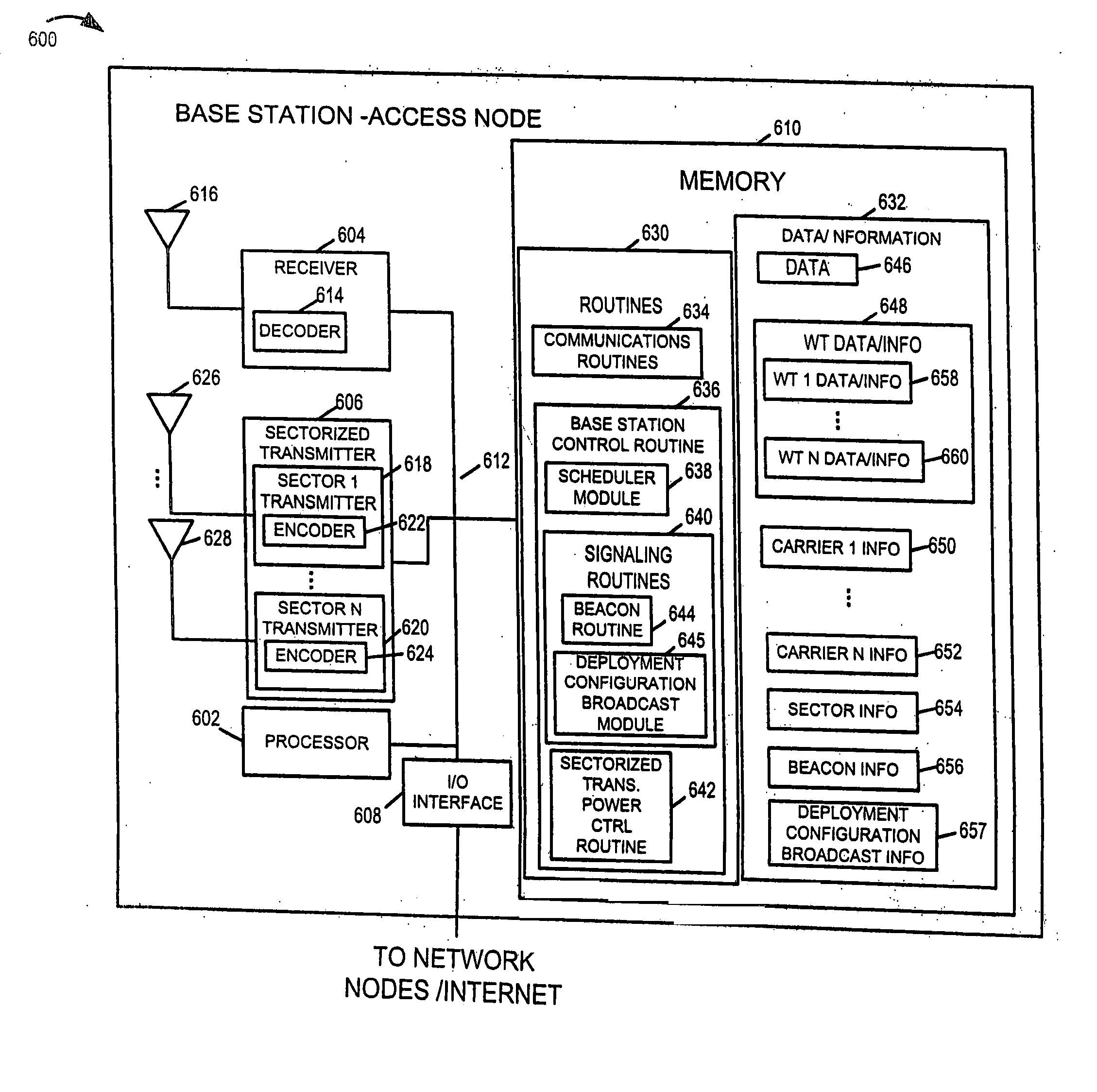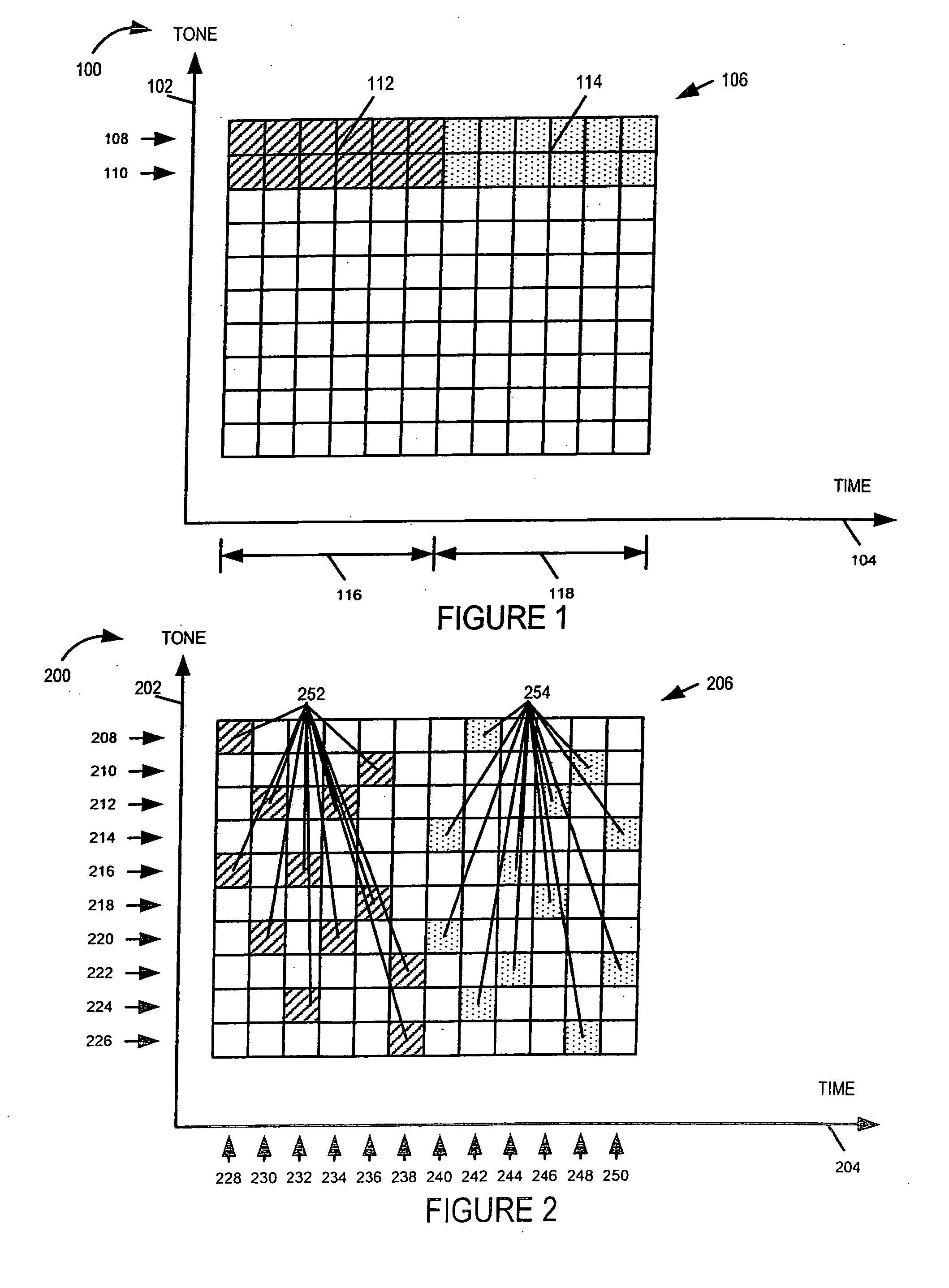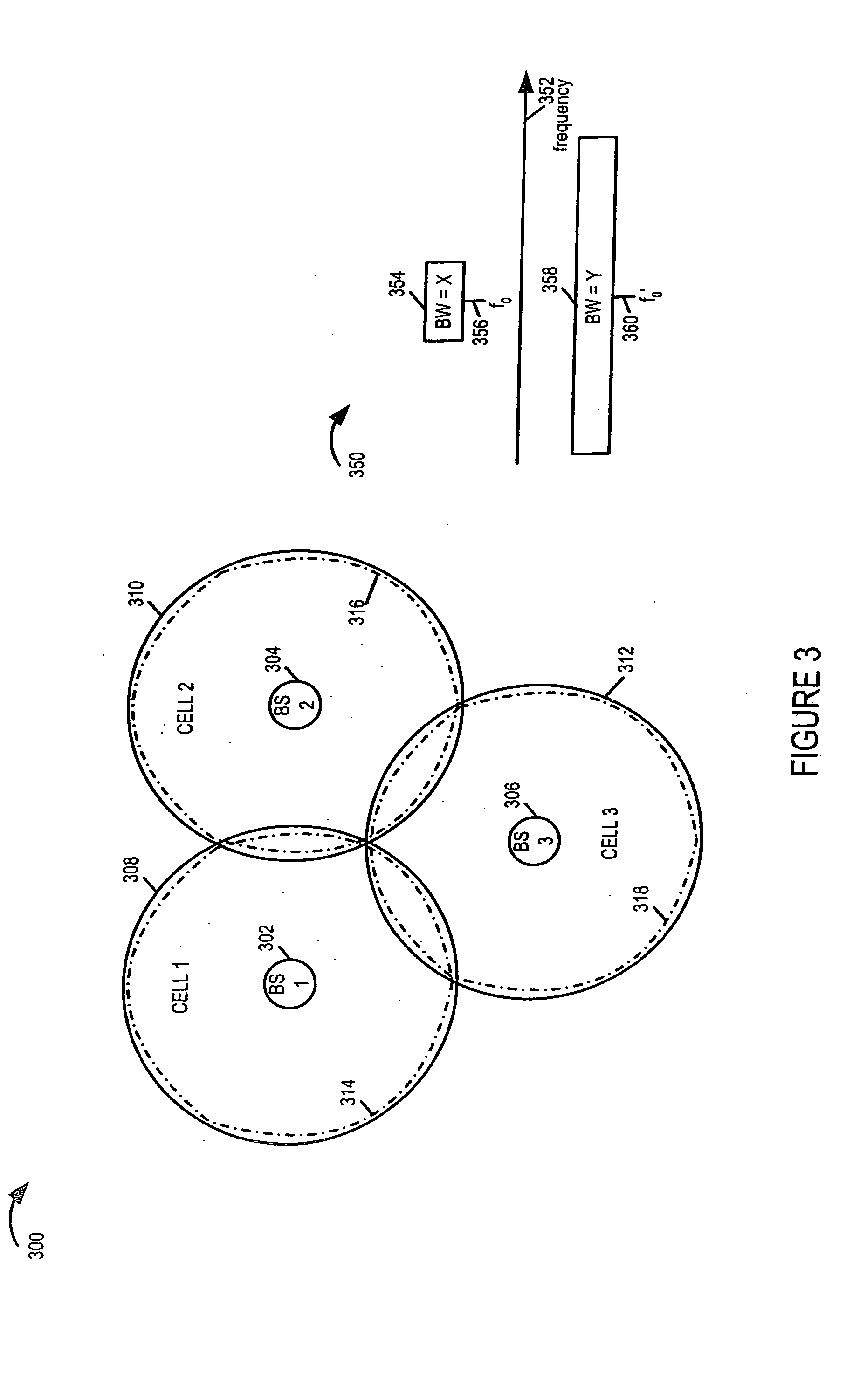Multi-carrier communications methods and apparatus
a communication method and multi-carrier technology, applied in the field of communication systems, can solve the problems of relatively high system hardware cost, high cost of communication system deployment, and high cost of wireless bandwidth, so as to improve system performance and robustness, and reduce interference
- Summary
- Abstract
- Description
- Claims
- Application Information
AI Technical Summary
Benefits of technology
Problems solved by technology
Method used
Image
Examples
embodiment 42
[0161] In still another exemplary communication system embodiment, referred to as embodiment 42, the exemplary communication system includes a plurality of cells, each cell including three sectors, each of the three sectors using the same set of three different carrier frequencies to transmit signals, the set of three different carrier frequencies including a first carrier frequency, a second carrier frequency and a third carrier frequency, each sector in an individual cell transmitting signals using the first carrier frequency at different average power levels, each sector in the individual cell also transmitting signals using the second carrier frequency at different average power levels, each sector in the individual cell also transmitting signals using the third carrier frequency at different average power levels such that different average power levels are used for each of the first, second and third carriers in each sector of each individual cell, said average power level corr...
embodiment 15
[0174] In one version of method embodiment 15, referred to as method embodiment (16) the method further includes selecting one of the first, second, third, and fourth carrier frequencies and establishing a communications link with the corresponding one of the first, second, third, and fourth network attachment points, as a function of an estimate of the quality of the first, second, third, and fourth communications links. In one version of such an embodiment, at least one of the first and second carrier frequencies is the same as at least one of the third and fourth carrier frequencies.
[0175] In another version of method embodiment (15) said first and second sectors are located in the first cell. In still another embodiment of method embodiment (15) said second sector is located in a second cell which is different from said first cell in which said first sector is located.
[0176] In one particular version of exemplary method embodiment (15) referred to as method embodiment (20) the ...
embodiment 24
[0179] In one version of method embodiment (23), the stored sector type information further includes information indicating the relative power difference at which signals on different carriers are transmitted within the first sector, and the method further includes determining from the received first sector type indicator signal and said stored information the relative power difference used by the corresponding network attachment point to transmit signals corresponding to the first and second carrier frequencies in the first sector. Such an embodiment is referred to as method embodiment (24). In one version of method embodiment 24, the first cell is a multi-sector cell in which different power levels are used by network attachment points in the sector to transmit signals.
[0180] The above embodiments are only intended to be exemplary and the invention is not to be limited solely to the above numbered embodiments.
[0181] While described in the context of an OFDM system, the methods an...
PUM
 Login to View More
Login to View More Abstract
Description
Claims
Application Information
 Login to View More
Login to View More - R&D
- Intellectual Property
- Life Sciences
- Materials
- Tech Scout
- Unparalleled Data Quality
- Higher Quality Content
- 60% Fewer Hallucinations
Browse by: Latest US Patents, China's latest patents, Technical Efficacy Thesaurus, Application Domain, Technology Topic, Popular Technical Reports.
© 2025 PatSnap. All rights reserved.Legal|Privacy policy|Modern Slavery Act Transparency Statement|Sitemap|About US| Contact US: help@patsnap.com



